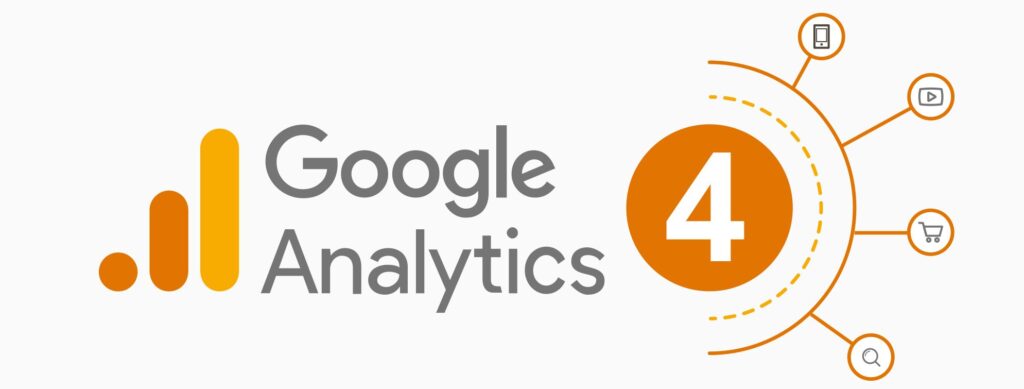How to Use Google Analytics for Marketing
Understanding your buyer’s persona is a crucial factor for lucrative marketing. Knowing your audience’s interests and behavior can help marketers to reach out to potential customers. In this regard, Google Analytics is a free yet powerful tool that provides all the essential data to strengthen your marketing approach.
Well, you might be daunted to analyze data in analytics because there is so much stuff to explore than just relying on page views and sessions. This article will guide you to formulate a thriving Google Analytics marketing strategy. Let’s delve into it deeply.
Related: How Google Analytics Helps Web Developers in UI/UX Design
4 Vital Sections for Digital Marketing Analytics
Whether you’re running a blog, e-commerce store, or any other web business, Google Analytics can assist you in getting valuable data insights to fill up the gaps lagging you behind success.
1. Audience
In GA’s dashboard, you can examine all the nitty-gritty details about your visitors from the audience section. For example, your prospects’ demographics, location, interests, devices. You can map out an effective advertising plan by drilling it down.
2. Acquisition
In the acquisition section, you can inspect the sources through which users land on your site. That may be your Google ads, campaigns, search console, or any other social platforms. You can also track different types of traffic, direct, referrals, organic, or social.
3. Behavior
From the behavior segment, you can get insights into how visitors interact with your web. You can also monitor the pages popular among visitors and the time they spend on specific pages.
4. Conversion
The conversion tracking is helpful to nail down your website’s overall performance. Like the funnel visualization, it can allow you to access where most of the traffic leaves the site and at what points you are getting more conversions.
Related: How to Create and Setup Goals in Google Analytics
Analyze Digital Marketing Dimension and Metrics with Google Analytics
Here are a few worth digging dimensions and metrics in analytics that will aid you to tailor ads campaigns and content maps.
1. Explore “All Traffic Channels”
You can scrutinize the mediums driving massive traffic to grow your business. In this wise, you can make the most out of your investment of time and money by targeting high coveting channels. Therefore, your ROI will be increased.
So, all you need is to go to the Acquisition >> All traffic >> Channels. For deeper data analysis, you can click any of the sources to get more information.
2. Target Potential Customers
You can also unlock those areas across the globe or even in your country from where you are receiving excellent responses. Hence, you can offer your products and services to your potential market.
On the Google Analytics home page, you can explore Audience >> Demographics >> Geo >> Cross-device. For instance, if your website audience is majorly females that visit your content, product, or service. In this case, you should design and configure web pages according to their psychology to retain them.
3. Identify Bounce Rate and Conversions
Monitoring bounce rate and conversions are necessary for you as far as sales and leads are concerned. You must have an idea of which pages are performing well and factors that bottlenecked other pages’ progress.
For that, go to Behavior section >> site content >> All pages, you will find the high bounce rate reports of pages. While Landing Page dimension depicts the picture of low converting pages. So, by critical auditing, you can fix the areas by the A/B testing process.
4. Improve Page Load Time
Studies show that users will abandon the site if it takes longer than three seconds to load. So, you should optimize all of your website pages for a better user experience. But before that, you should examine the site performance thoroughly.
Thankfully, Google Analytics allows you to detect your page load time by default. So, you can visit the Behavior >> Site Speed >> Page timing reports.
5. Using Google Analytics to Track Social Media
So, for tracking your social media platforms in data analytics, you must have the connectivity of the GA to social media. That will help you to recognize the user’s response to your content and their social platforms preference.
Moreover, you can audit social mediums traffic, ROI of social campaigns, and UTM parameter tracking. By using this data, you can optimize your campaigns for generating more leads. Move over to Acquisitions >> Social and Campaigns>> All campaigns for analyzing the reports.
6. Set Up Content Grouping and Content Position
You can create your site groups by author, category, or word count using digital marketing analytics. That will guide you to scan which pages are getting more engagements. Moreover, you can investigate the content in which users are interested even more.
Related: Want to learn more About Conversion Tracking?
After properly checking it out, you will make smart-marketing decisions for the tone, type, place of your website content. Head over to Behavior >> Site content >> All pages for content analysis.
7. Track the Goals
From the Conversion section, you can inspect the accomplishments of the goals that are directly associated with your digital growth. Goals are the practical actions (conversion) that you set for your marketing success.
Go to Conversion >> Goals >> Overview for understanding how you are performing in the market. Your goal exploration will lead you to the effectiveness of Google Analytics’ marketing strategy.
The Takeaway
In essence, your marketing scheme has the most significant impact on your business success. And Google Analytics assists you to track all the information in a single place precisely for generating handsome revenue. Are you looking for conversion tracking help, get in touch with Involvz team today!
Read Our Latest Posts:
- What To Look For In A Google Analytics Agency?
- How to set up Shopify GA conversion tracking?
- How to Data Filters In Google Analytics 4

